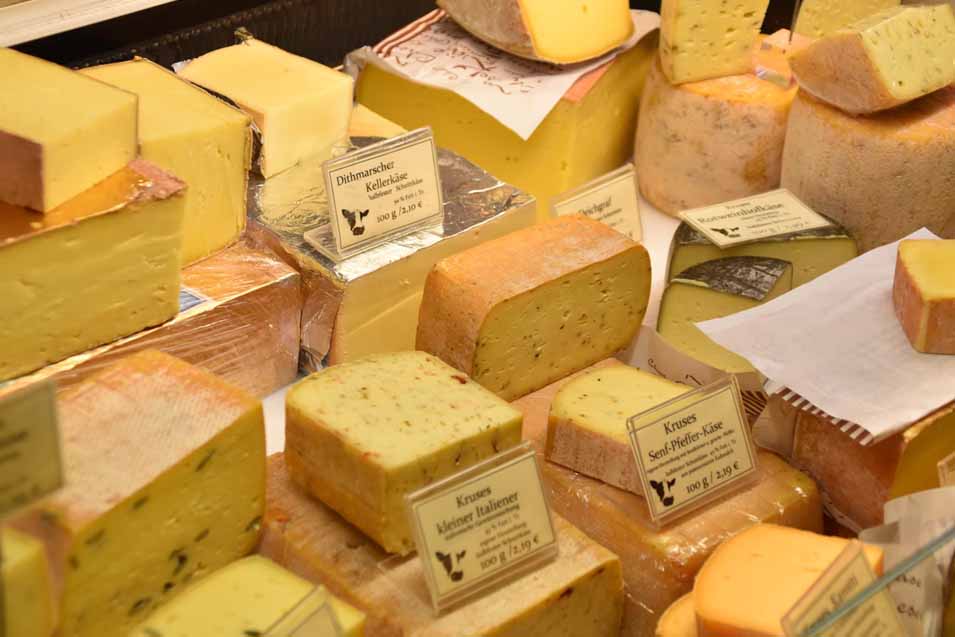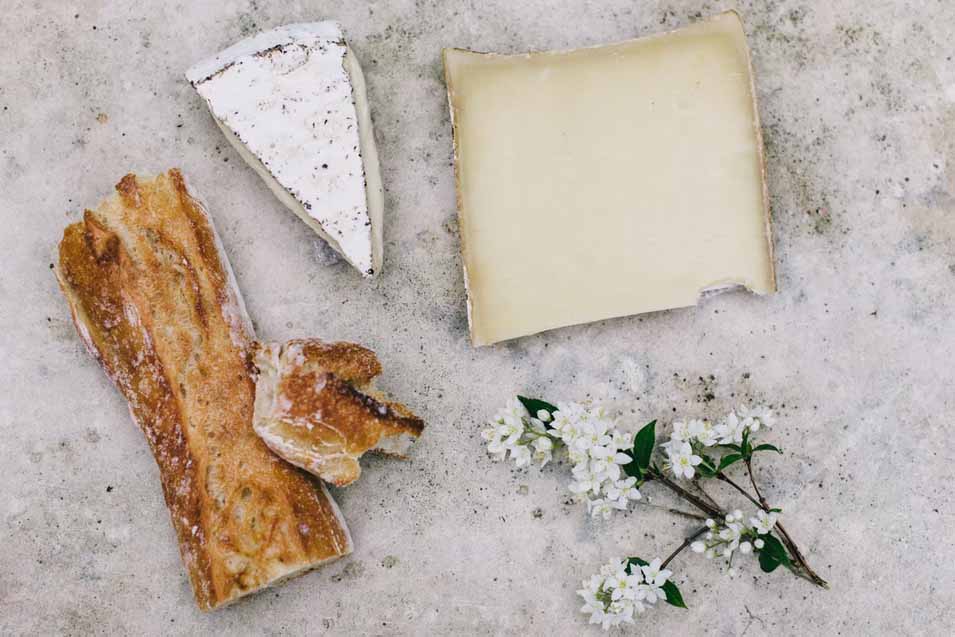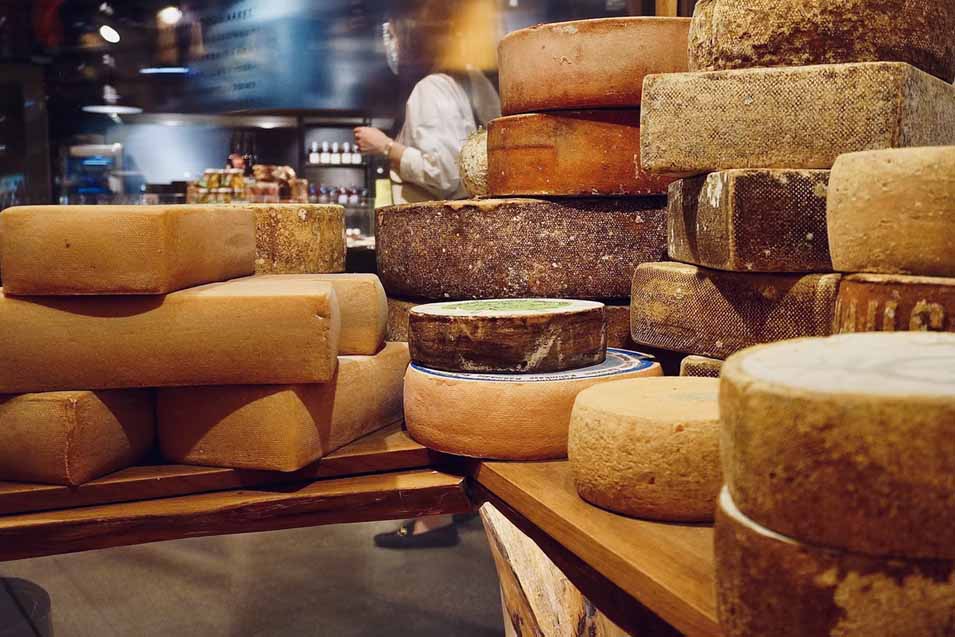
It’s likely that if you have a love for cooking, you’ll want to experiment with all of the most popular cheeses from across the globe. And there are a lot of them! So if you are looking to buy cheese products online in Los Angeles, check out this list of the top 10 kinds of cheese you must use in your cooking at least once in your lifetime.
Camembert
Camembert de Normandie, Normandy’s most renowned and recognizable cheese, is manufactured from raw cow’s milk and averages 250 grams in weight. The taste is robust and strong, like mushrooms, grass, and butter, while the fragrance is moldy and cabbage-like.
According to one tale, a farmer woman called Marie Harel defended a priest on the run in exchange for the Camembert recipe we know today. Hand-ladled into molds, the cheese is dry-salted and aged for 30 to 35 days. Its flesh is delicate and creamy, with a white, rotten peel covering its outside.


Gorgonzola
This cheese is created with cow’s milk and is recognized by green or blue mold marbling. It was first produced in 879 CE in Gorgonzola, a Lombardian town located just west of Milan. Penicillin spores are added to the milk to cause blue veining.
This Italian cheese is offered in two types, depending on its age. Gorgonzola Dolce, aged for approximately two months, is quite soft and creamy with a mild flavor reminiscent of butter, sour cream, and a less pronounced lactic tang. In contrast, Gorgonzola Piccante is a firmer, more crumbly version that requires at least three months to develop its strong, spicy flavor.
Paneer
Paneer is a soft and crumbly fresh cheese manufactured from pasteurized cow’s or water buffalo’s milk. Unlike other cheeses, paneer is made without rennet, which makes it entirely vegetarian.
It originated in India and Bangladesh and is described in the Vedas, which date all the way back to 6000 BC. Peynir is the Persian and Turkish term for cheese. This cheese is often used in curries, particularly in northern India, and works very well with solid and spicy spices.
Brie
Brie de Meaux is a delicate French cow’s milk cheese. The flat cheese has a lovely white mold-covered rind. It is aged for at least four weeks in basements on straw mats in the Île-de-France region near Paris. This is the most renowned form of Brie, and it was once regarded as the cheese of royalty and the well-to-do.
You need to allow the Brie to come to room temperature before serving to truly enjoy its array of tastes – moldy, mushroomy, nutty, and fruity. The cheese is often used in French cuisine, particularly in Galettes briardes and Bouchées á la Reine au Brie.
Gouda
Gouda Holland is a semi-hard Dutch cheese made only with milk from Dutch farms. It is one of the world’s most popular cheeses. The cheese is shaped like a flattened wheel and is fragrant and tasty (mild, fruity, sweet, butterscotch notes), depending on the state of maturation.
Young Gouda has a sweet, fruity flavor but matures to a rich golden color and a more complex, almost gritty texture. Its taste is multifaceted, ranging from fruity notes to traces of cocoa and peanut, leaving a mouthfeel that is rich and smooth. Typically, it is sliced into sandwiches or cubed and consumed as a snack.
Parmigiano
Parmigiano Reggiano, considered one of the world’s finest cheeses, is created using raw, semi-skimmed milk from cows grazing on fresh grass and hay. It has a tough, gritty texture with tastes that vary from nutty to pungent and somewhat spicy, depending on the age of the cheese.
Parmigiano Reggiano dates back to the Middle Ages when Benedictine and Cistercian monks recovered marshes in the Po Valley and began manufacturing this highly coveted cheese, which was eventually named after the city of Parma, where it originated.


Ricotta
Ricotta is a soft, fresh cheese prepared from the milk of sheep, cows, goats, or Italian water buffalo. Technically, it is not a cheese but a creamy curd formed by reheating whey, a by-product of cheesemaking — thus the name ricotta, which means recooked in Italian.
Ricotta curds are white and creamy in color, quite fresh in flavor, and somewhat sweet in taste. The form and weight of the cheese vary according to the milk used in the process, but it is often conical in shape due to the use of the fuscella – a traditional container used to drain the cheese after skimming.
Feta
Feta is Greece’s most renowned cheese, popularly referred to as the ‘princess of cheeses.’ The cheese is manufactured from sheep milk or a combination of sheep and goat milk (the latter should not exceed 30 percent ). Macedonia, Thessaly, Thrace, Epirus, the Peloponnese, and Central Greece produce it.
Feta was originally made using unpasteurized milk. However, it is now permitted to use pasteurized milk as well. The cheese is manufactured in colossal square or triangle-shaped molds and kept in brine-filled oak barrels or tin containers to maintain its freshness and acidity.
Cheddar
This strong cow’s milk cheese is one of the most popular and toasted cheese favorites in the world today. It was invented in the twelfth century in the hamlet of Cheddar in Somerset county, England. Cheddar cheese is a firm cheese manufactured from pasteurized cow’s milk that varies in color from white to light yellow.
When young, the texture is smooth, but the surface becomes crumbly, and the taste grows harsher as it matures.
Mozzarella
Mozzarella is a soft, fresh curd cheese prepared from entire cow’s milk. Because mozzarella has a delicate creamy taste and a pleasant scent of fresh milk, it is often associated with light white wines. Although this Italian classic originated in the province of Campania, it is currently manufactured across the nation.
When prepared with cow’s milk, the cheese is often referred to as mozzarella fior di latte ( to distinguish it from water buffalo milk mozzarella). Although the old custom of manufacturing mozzarella cheese stretches back to the fourth century BCE, the first recognized mention of it was in a 1570 recipe book written by Bartolomeo Scappi, a famed Renaissance chef.
